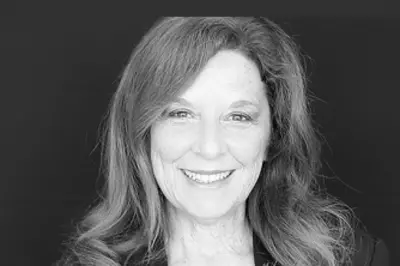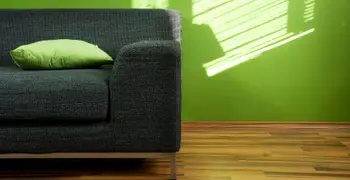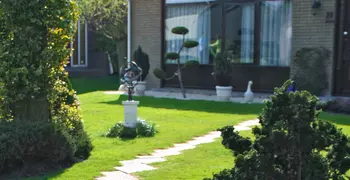Interview with Eve Edelstein

Trained in both neuroscience and architecture, Eve Edelstein, PhD, has an extensive background as a university lecturer, scientist, and clinician. Her research in basic and clinical neuroscience provides the basis for looking at the influence of design features such as light, sound, and location on educational and healthcare design outcomes. Edelstein, who developed the first program of courses in neuroscience for architecture at San Diego’s NewSchool of Architecture and Design, is also a Visiting Scholar at the University of California San Diego, where she teaches a senior seminar in neuroscience and architecture.
Please describe your background and area of expertise.
Edelstein: My background is both in architecture and in neuroscience. I began with a degree in anthropology at Berkeley and moved from there into neuroscience because of the influence of a particular professor who got my mind thinking about how the brain responds. My particular interest at the time was communication and language and how brains work to control how we perceived speech and the environment. She took me down the path of neuroscience. I just became fascinated. Then, I went on to do physiological research in the hearing sciences, followed by clinical research and clinical service. So I’m a clinician as well as a scientist, and I’ve received training in architecture and design.
What is physiological research in hearing science?
Edelstein: If anatomy is the form of the brain (the structure), then physiology is the function of the brain. I was very intrigued by how the brain controlled the ear. At the time, it was thought that sound came into the ears and the information was transmitted into neural signals and went up to the brain as a sensory process. And yet, if you looked at anatomy, you saw that almost every animal species has feedback from the brain to the ear. So, I was fascinated by what this was, and I wasn’t buying the argument that it might not do anything because Anthropology taught me that if a species maintains a piece of anatomy, it’s because it’s being used for something.
I was intrigued to find out that it was our whole system’s mechanism for controlling how sensation comes in—speech and language perception. How do you suppress the sound of the airplane overhead relative to my voice? That was my hypothesis, that it was that type of system. I began looking at it at a cellular level. What does each cell in the organ do? If you stimulate the brain, how does it suppress that cell’s response?
I started out with intracellular work, and some years later, they developed a non-invasive system with a little microphone in the ear canal to measure what the cells were doing, and that went on to become a clinical device that they’re now using to find out whether or not a newborn’s peripheral hearing organs are working. Ten years ago, we were diagnosing children with hearing loss when they were three or four years old, on average, and their speech was so delayed that we couldn’t easily get them back to where they needed to be. It was too late.
Often in science, you expect that your small contribution will be just a tiny part of the puzzle. But in clinical science, you see application quite quickly, and it’s very exciting for me to see us going from the intracellular science to an application that’s served so many thousands of babies within less than one scientist’s lifetime. That was so inspiring, and I think it’s why I like to be where I am now—an interpreter in between science and application.
How did you become interested in architecture after earning your degree in neuroscience?
Edelstein: My interest in architecture began almost at birth because my father was an architect who helped to found and lead one of the largest architecture firms in the country. Some of my earliest memories are piling into the car on the way to the beach (we lived in Jamaica) and stopping at the building sites on the way. And our dinner table was always covered in blueprints.
As I got older, I would make my father take us on tours of his buildings and explain to us why he had done one thing or another. When I found out about the Academy of Neuroscience for Architecture, I thought “Oh, now I get to combine my hobby, which was architecture, with my work,” and I didn’t have to leave one profession to join another. I realized then that all those years with my father telling me about his design and why he had built what he built were actually training for me.
Could you explain some of the research you’re conducting with the Academy of Neuroscience for Architecture and also help me understand specifically what neuroscience and knowledge of human responses can contribute to our planning of the built environment?
Edelstein: I think if I begin with what neuroscience can contribute, it will help explain some of the research projects we’ve been doing. For millennia, we’ve been trying to understand the influence of architecture on the people within and the people without. Common themes come forward. People are asking about why light influences us the way it does. How can we create spaces that:
- Control, modulate, and manipulate light to get the effect of it that we all intuitively feel the moment a sunbeam strikes us?
- Give us the pleasure of having a dark, relaxing environment?
- Provide adequate lighting for reading or other tasks?
We’ve had many efforts over the past several thousands of years to look at the behavior of people within built environments, social groups, movement, and psychological effects—the environmental psychology movement.
What neuroscience offers is slightly different. It offers a different scientific methodology that enables us to measure the environment using technology and human responses in objective ways. Neuroscience enables us to measure the brain and the body and its response to the building. An MRI allows us to look at the brain’s activity in normal human beings as they are experiencing sound or visual images and spaces. Using EEG, we can measure brainwaves to look at how you respond as you are moving through space or virtual space.
At UCSD, we are developing systems that enable us to map the entire brain using 250 electrodes in a cap, much like they do with neuroimaging. By using so many electrodes, we can do a vector analysis so you see where in the brain the signals are being generated and what their frequencies are. We can also see if a person is engaged with what he or she is responding to or relaxed? The Schwartz Center for Computational Neuroscience at UCSD has developed programs to analyze the brainwaves this way, and they are also developing a system to analyze the musculature in the head. So as before we would conduct EEGs while a subject lies still, now we’re conducting EEGs as a subject moves in space.
So you could feasibly have a person walking around with it, experiencing the building while the EEG is tracking the brain’s activity?
Edelstein: Currently, there are two projects taking place. They are measuring head and neck electrical potentials as people move, point, and respond to words and objects, and we are localizing where in the brain these responses are coming from. Then we’re using that baseline to extract from these responses when we’re in the virtual cave. We’re working with CALI-T-2 at UCSD, which is an interdisciplinary site where they have informatics, technologies, and a virtual cave. This is a 360-degree full-scale, virtual reality cave, where we’ve rendered the building that we’re in, and then we’ve set up an experiment within that building.
So as people are virtually navigating through this virtual space, we’re recording their brain waves as they respond to different environmental conditions. And we’ve set up the conditions so that we can create a metric for recognizing brain patterns for when people know where they are and when they’re lost. With that metric, we’ll then be able to change the environment, change the visual settings, and find out what’s effective for things like way-finding, what people notice and what they don’t notice, and really test architecture in an interactive way.
It’s a rapid way compared to building a mock up and a less expensive way than creating a building and then conducting post-occupancy evaluations finding out what worked and what didn’t.
So we’re bringing the virtual world into our experimentation, and I think we should bring the virtual world into our built settings so that technology can provide us some of the things that we can’t necessarily build. I might want you to have daylight, but if you’re in an urban setting in an existing building and we’re doing a retrofit of that space for different functions, I might not be able to bring you natural light, but I might be able to use technology to bring you some of the other sensations and aspects of the environment that you want.
So when you’re in the virtual reality cave, how is that actually set up?
Edelstein: In this particular environment, it’s a 15-panel cave, and each panel has two projectors. The images are slightly off-set, and all you have to do is wear a pair of polarized sun glasses, and that brings the two images into one 3D image.
Is more private industry being tapped for these kinds of important research projects or do they mostly still live in academia? It seems like the research might be happening in silos right now.
Edelstein: Well, I think we’re breaking down the silos. And that’s actually one of the achievements of the Academy of Neuroscience for Architecture—their goal was to foster the thinking that would bring together the different disciplines. The efforts that I see making greatest headway are those in which you combine an academic institution (because they often have the research resource), a client (they have the purpose and the goal), and design firms (which are bringing in researchers).
I also teach courses in Neuroscience for Architecture at the new school of architecture at UCSD, and we have students that are neuroscientists, biologists, psychologists, landscape architects, designers, and architecture students. I teach undergrads and grads together how to find and interpret biomedical research.
What are some of the most exciting things happening in this area today?
Edelstein: I have been involved in a collaborative research project looking at the influence of light on health. We looked to the literature about circadian rhythm (the response of the body, mind, and behavior to the daily changes of light) and came across more than fifty years of rigorous research on the influence of light on the body and on the mind. We were exploring whether or not brief light showers might be a vehicle for engaging circadian rhythms in staff or patients who spend long times indoors and can’t have the lighting that we would like them to have (natural lighting).
We tried a couple different light sources over very brief periods in the morning and the night to see how their stress responses changed by looking at heart rate variability and brain waves during different fatigue in working memory tasks.
What we found was that, indeed, in a very short period of time, the heart rate was activating to the bright white light. We used a red light as an alternate condition, expecting it to have very little effect, but what we found was that the heart rate variability was situationally appropriate. When the subject was relaxing in a red light environment, the heart rate was relaxed. When they had to engage in the memory task, it was significantly different in its engagement. It was readying the body for the working memory task and then allowing the body to relax again after the memory task was over.
If you go back through the literature, you’ll see that the red light is often used as a control condition versus the bright light and the blue light, which we know controls melatonin. If you look carefully at the literature, you’ll also see that the red light still has a small effect, compared to no light. That does not tell us that we need to make Christmas trees out of all of our built environments.
What it does tell us is that we need to look more broadly at the different spectra of light, think about what has to happen in that space and think about how we might adapt our lighting to suit a specific user, be they a patient with a certain medical condition or a staff member who is now in a mode where he or she needs to relax instead of engage, and also whether or not they have been in that environment for a long period of time.
When you look at how we would apply this to an architectural building—for instance, a hospital—the question is: do outside views lead to shorter lengths of stay because of the view or because of the light coming into the room? We still have to answer such questions. We do know that people who spend the most time inside buildings have a greater need for control of circadian lighting, and people who are sick have a greater need for controlled lighting that responds to their condition. So if I’ve just come out of the operating room and all I want to do is sleep for a day, that’s appropriate. I shouldn’t be required to immediately cycle with my circadian rhythms if I’ve had some type of ophthalmic surgery and I need or want darkness.
Let’s not forget the staff members, who sometimes only get borrowed light from the patient windows. Now if they’re in a unit in which the patients spend most of their time sleeping, it’s the staff who need the consideration of lighting more than the patients. The staff are there 24/7, they’re often there on long shifts, and their shifts are often not regular.
So the question is complex, it’s how we take the science we know today about circadian responses and the visual system, and how we adapt the lighting we have for multiple uses inside a building. I think we have to challenge the concept of “one lighting fits all” and the concept of flexible lighting being more expensive. One of my colleagues just altered the lighting in an educational environment with some of these ideas about different zones of need and was able to reduce the number of light fixtures needed in that room by 25%.
My argument is that if we look at our ecologic impact, our economic impact and the impact on us as humans, then it will not be more expensive. And that’s where I think research fits in. And that’s where interdisciplinary efforts fit in. That’s where looking to a team of experts gets us the answer very quickly.
What can I do to foster a more healing environment in my own life? Do you have any suggestions for things I can do at home or work?
Edelstein: Well, I’d like to start with light, sound, and location. With light, I would encourage people to think about their daily circadian rhythms, and try to create light that suits the rhythms that they have to follow. I would encourage people to try to minimize the amount of light that they’re exposed to when they need to sleep.
There’s some fascinating epidemiological research that is showing relationships to health disorders and night-shift work. It’s in its early stages, and I don’t want to be alarmist, but let’s try to look at the sun as the gold-standard of what the body is looking for and to the extent that you can, try to emulate that kind of pattern in your home and work environment. So if you work the night shift, the same applies. Give yourself darkness when you’re trying to sleep during the day. Try to bring more specific lighting needs to your working station. That may change as you age, so start bringing in light of different spectra and intensities to your workspace.
In terms of sound, there’s a great deal we can do in our own environments. Architects can do a great deal by bringing in what we’ve learned from acousticians. That includes changing the geometry of a space to improve speech and noise recognition. For example, architects can change the absorptive and reflective qualities of walls, change where doorways open opposite each other to minimize direct transmission of sound, and they can change how they programmatically lay out a building, thinking about sound. What we can do in our own homes is look at what we hang on our walls to help soften a room. You can try creating air gaps, a series of portable temporary wall space that muffle the sound.
In terms of location, think about how you arrange proximate spaces so that they match the function within that room. For example, if you want a space to be restorative, then you should move activity spaces away from it. I encourage people to think laterally about where they put their different activity centers in their homes, and that follows through to our largest buildings.
When I apply a neuro-architectural approach, I think about sight, sound, touch, textures, and the sounds that textures evoke. And then I think about how all of that evokes different emotional responses and taps into our memory centers. The emotional system is tied very strongly to the sensory systems, so we can evoke some memories by bringing in different sounds, smells, and sights. In a healing environment, when we’re looking for places of restoration, we can think about what we personally can bring there.
In addition, we should not forget the impact that environments have on our cognitive systems. In a healthcare environment, we want our staff to be cognitively aware in their optimal functional states even though we want them there at very extreme hours. So we have to give our staff places for focus and concentration, places for communication with colleagues and patients, places of engagement and excitement, as well as places of respite and restoration. I’m very excited to see some hospitals bringing on board small restorative rooms for faculty and staff where they can take a moment to deal with the difficulty with helping patients. They recognize that staff need a place to recoup, recover, and reflect before they move on to the next patient.
Would you say that you use similar ideas when coming to visit a friend or family member in the hospital?
Edelstein: Yes, they’re good starting points to think about. Even if you’re just there for a moment during visiting, you can ask, “Would you like me to open or close the curtains for you?” or “Can I change the angle of that lighting so that it’s not in your eyes?” or “Might I be able to bring in a different light for you at your bedside table?”
Talk to us about the influence of the environment on mind and body, and how has the architecture industry been impacted by this? (Or have they yet?)
Edelstein: I’m actually very excited to see architecture grabbing hold of evidence-based design and moving it into built environments. I would say healthcare architecture is leading the charge. They have the advantage of routinely collecting the type of information we need to understand how mind, body, and brain are responding to the built environment. Their language is the language of scientific methodology. Their source of information is biomedical literature. When architects come in and say, “We would like to create a different approach to designing this facility for you. We would like to tap into evidence to understand how we might improve the environment to meet the functions that you participate in here,” the board of a hospital understands that language; it’s their language.
Looking to the future, is there anything coming up next on your professional agenda?
Edelstein: The thing that excites me the most is to really model an interdisciplinary way forward. Not everybody has a virtual reality cave with the expertise that we have, so I hope we can create a resource for others to ask questions of us. I’m fortunate to work with an architecture firm that provides me a huge team of people to answer questions, so I hope to create collaborative ventures with clients, researchers, and other firms so that we can all work together to move this idea forward.
I feel like a lot of my research has been pilot studies, and we’ve shown methodologies that can be used, and now I feel like it’s time to use them. I would like us to take some of the wearable micro-technologies that I’ve utilized and start doing more of the post-occupancy evaluations. Go out into built environments and measure both the user and the environment with a fine-tooth comb, because it’s only then that we can show a better correlation between the built environment and user outcomes and understand the causal relationship to a better degree. It is too expensive to first create an entire a building and then measure whether or not it was successful afterward.
With these new micro-devices that can log the exposure to the environment over days, we can give you a little clip on your shoulder and measure your exposure to the environment over time. And then we can correlate that to outcomes, and we can go through a building and find out why certain places seem to be successful and why certain places are avoided, understand it at a deeper level, and then relate them to our broader studies. The more fine-grained our information, the more we do our studies before the architect’s pen touches paper, the more we can get specific information that is more predictive of the outcomes.


